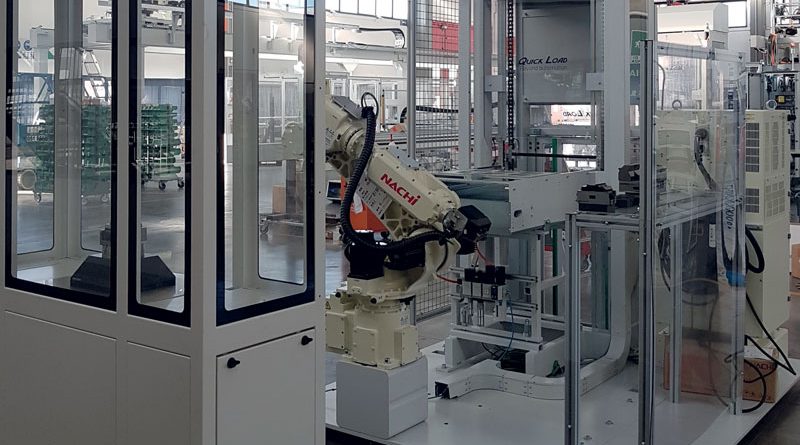The Centric Vise Becomes a Gripping Module
R-C2, the centric vise, innovates machine tending as a valid alternative to the palletized system, thanks to its dual function: it acts like a centric vice in workpiece clamping during machining and like gripping module on the robot arm for handling and moving the workpiece.
In machining processes, automated machine loading is becoming widespread even in the case of single or very small batches because it improves productivity, thanks to the synergic interplay between gripping tools and clamping devices. SCHUNK presents an innovative product: R-C2, the centric vice which becomes a gripping module. This solution has been developed by Gressel, a Swiss company of the Group, with historical and leading experience in clamping devices. R-C2 is going to revolutionize machine tending and it is a valid alternative to the palletized system, thanks to its dual function: It’s acting like a centric vice in workpiece clamping during machining as well as acting like gripping module on the robot arm for handling and moving the workpiece. Quick Load, an integrator of robotic cells with twenty years of experience in the sector, realized a demo application showing all the advantages of this innovation. Without large investments for a palletizing system and with only few gripping and clamping devices, it is now possible to implement an optimized and unattended process for loading and unloading machine tools.
Innovative, high performance system with a dual function
Developed by Gressel in cooperation with the SCHUNK Gripping System division, R-C2 is the fusion of the advantages of robot direct loading with pallet loading. In the machine, R-C2 works like a pallet. The centric clamping vice is inserted into the machine by the robot and uncoupled. When loading, R-C2 works like a gripper. The R-C2 module uses the centric clamping device as a controlled servo gripper. R-C2 consists, in fact, of two components: a high-performance centric vice with encapsulated spindle, and an automation module mounted on the robot wrist. This module is equipped with an electric motor and a hexagonal connection through which it is possible to connect and actuate the vice for workpiece clamping. The electric motor allows to freely adjust the clamping force up to 35KN (100 Nm) and to perform monitoring functions with laser and RFID technology.
Following the concept of modularity and standardization of the SCHUNK portfolio, R-C2 is adaptable to the quick changes for SWS and VERO-S NSR robots so that it can be integrated into various automation applications.
The demo application proves the effectiveness of the gripping system
A demo application of the system has been built, consisting of 3 different areas: the first area is dedicated to machining, the second one to the vices stocking and third one to the parts stocking. The machining area is equipped with an aluminum structure that simulates a machine tool, equipped with a quick-change pallet module VERO-S NSE A3 for automation. This module from SCHUNK is optimized for single pallets, in order to facilitate automatic loading and unloading. The vices stocker supports different sizes of KONTEC KSC centric vices compatible with the R-C2 system, equipped with different jaws for various part types. The raw and finished parts stocker is a CNC tower realized by Quick Load, a versatile and compact solution particularly suitable for stocking medium-small parts of any shape with practical mobile trolleys. Finally, the robot chosen for this application is a reliable and high-quality robot from the Japanese company Nachi, model MC20 with a 20Kg payload and repeat accuracy of +/- 6mm. Once the machining is over, the VERO-S NSE A3 quick change pallet module opens and releases the vice, the robot couples the vice directly thanks to the R-C2 system and unloads the machine by depositing the vice with the finished part clamped on it in the parking stations. Here the robot couples a new vice with a raw part already blocked and loads the machine, where it is coupled with the VERO-S NSE A3 quick change module. The machining can start again.
In parallel with the machining, the robot arm can return to the vices stock where it had left the vice with the finished part, it couples the vice and move to the tower where it places the finished part. Then, it picks up a new raw part with the same vice and places the vice with the raw part in the parking station. From here, the cycle repeats till the end of the production batch. l

